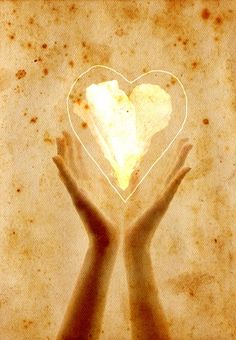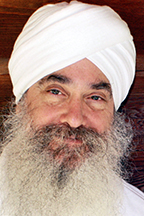by SS Dr. Sham Rang Singh Khalsa, Millis MA
Summer 2019
Ashrams, probably like all spiritual communities, attract a diverse lot. Over the decades of living in an ashram community, we have often seen individuals causing problems and requiring much time and attention. A response often appears as an effort to try to remove the person causing the problem, but the Siri Singh Sahib consistently urged us to remain open and welcoming to all.
Group consciousness has parallels with individual consciousness. As individuals, if we try to purge the shadows from our psyche, that very resistance can bring more energy to creating and sustaining the darkness. Bringing awareness to our own Hidden Self, fostering compassion for the previously intolerable aspects of our personalities and woundedness, more effectively integrates everything into the whole, seeing God in all.
In Ayurvedic teachings, poorly digested residue (ama) reduces the flow through the energy channels and reduces the overall radiance of the system. Sometimes the best way to detox the system is to transmute the toxin from stuck density to flowing energy.
Thus, in life, that which appears as toxic and unwanted can be recognized as misunderstood and yet still a gift from God. Shadow moves to light as we surrender repeatedly to Guru actively in daily life. Our perspective determines our attitude, and that habitually colors our assessment of the world around us.
The Other is Us
The five Sutras of the Aquarian Age help us to bring these lessons of the individual to the group. If the other person is seen as you, then we can resolve any resistance to another by looking inside ourselves.
If there is a way through every block, if we start right now to find that path, and if we vibrate the radiance of the Guru, then the resultant radiant love gives the compassion to understand the other. Everyone has the right to exist and be who they are, even if sometimes we have to act as spiritual warriors against some types of words and actions that arise.
When we try to fix people and things as if they are separate from us, the process is difficult. But as yogis, we know that the outside is a reflection of the inside.
 Sat Nam Rasayan teaches us that all we know of the other is what we feel in relation to the other; resolving that tension inside us heals the other. The Hawaiian healing technique Ho’oponopono teaches that we are 100% responsible for any suffering with which we come into contact; when we deeply open our hearts, the suffering is resolved (in God’s time and way, of course).
Sat Nam Rasayan teaches us that all we know of the other is what we feel in relation to the other; resolving that tension inside us heals the other. The Hawaiian healing technique Ho’oponopono teaches that we are 100% responsible for any suffering with which we come into contact; when we deeply open our hearts, the suffering is resolved (in God’s time and way, of course).
Personally, I’ve noticed in sitting in ashram meetings or just thinking about folks in the community, that if I concentrate on how I’m feeling inside and bring love to those reactions, then the energy of the group seems to shift. Maybe I’m making this up, but I don’t think so. And at least it makes me happy.
Part of the Whole
Guru Amar Das taught us to serve and minister to the needs of others. Let us carry the water for each other, nurturing everyone in the group to feel part of the whole. The Guru and the Sangat are One. When we recognize each other as holy, that is what we get.
If we don’t see God in All, then the whole thing crumbles into suffering. That suffering reminds us that we need to adjust our perspective again. It’s not always easy, but that’s why Guru in the form of life itself provides a Dharma that constantly gives us feedback and wisdom.
God is the way It is, and the Sangat is the way it is. Exactly the way it is, not the way we think it should be. It and we have been created perfectly in apparent imperfection and that’s what we have to love. That love starts within.
About the Author
 SS Dr. Sham Rang Singh Khalsa was appointed Sikh Dharma Minister and Guru Granthi for the Millis Gurdwara in 1988, where he continues to live with his wife Arjan Kaur. He has served as camp doctor for Summer and Winter Solstice gatherings for over 40 years. His passion for the healing of mind and body through deep connection with the Divine utilizes the technology of Kundalini Yoga within the models of Eastern and Western medicine. Still working in urgent/emergency care medicine, he most loves teaching workshops and teaching in Level 1 Teacher Training venues.
SS Dr. Sham Rang Singh Khalsa was appointed Sikh Dharma Minister and Guru Granthi for the Millis Gurdwara in 1988, where he continues to live with his wife Arjan Kaur. He has served as camp doctor for Summer and Winter Solstice gatherings for over 40 years. His passion for the healing of mind and body through deep connection with the Divine utilizes the technology of Kundalini Yoga within the models of Eastern and Western medicine. Still working in urgent/emergency care medicine, he most loves teaching workshops and teaching in Level 1 Teacher Training venues.


